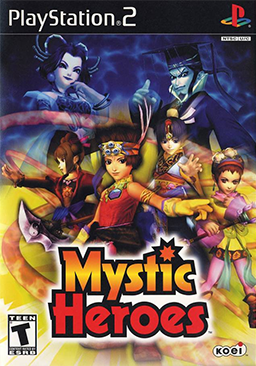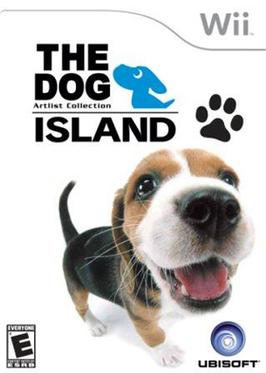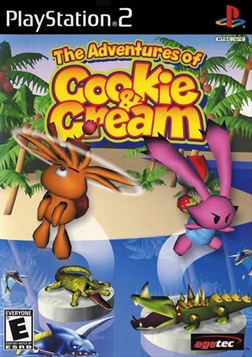Fatal Frame, titled Zero in Japan and Project Zero in Europe and Australia, is a Japanese survival horror video game series created, published and developed by Koei Tecmo. Debuting in 2001 with the first entry in the series for the PlayStation 2, the series consists of five main entries. The series is set in 1980s Japan, with each entry focusing on a location beset by hostile supernatural events. In each scenario, the characters involved in the present investigation use Camera Obscura, objects created by Dr. Kunihiko Asou that can capture and pacify spirits. The series draws on staple elements of Japanese horror, and is noted for its frequent use of female protagonists.

Rygar is a side-scrolling platform game created by Tecmo in 1986 and originally released for arcades in Japan as Argos no Senshi. The player assumes the role of a "Legendary Warrior", battling through a hostile landscape. The main feature of gameplay is the use of a weapon called the "Diskarmor", a shield with a long chain attached to it.

Team Ninja is a Japanese video game developer, and a division of Koei Tecmo, founded in 1995 as a part of Tecmo. It was founded by Tomonobu Itagaki, and is best known for franchises such as Ninja Gaiden, Dead or Alive and Nioh.

Mystic Heroes is a hack and slash video game developed by Koei. The game is loosely based on Investiture of the Gods, a Chinese supernatural novel about the fall of the Shang Dynasty and the rise of the Zhou Dynasty.

Tokobot, later released in Japan as Karakuri, is a puzzle-platform game developed and published by Tecmo for the PlayStation Portable in 2005. An expanded version was later released for the PlayStation 2, titled Tokobot Plus: Mysteries of the Karakuri in North America, Europe and Australia and Korobot Adventure in Japan.

One Piece: Grand Battle is a fighting game made in Japan based on the anime and manga series One Piece. It is the fourth and final game in One Piece's Grand Battle series and the nineteenth One Piece video game released. The game was released in Japan as One Piece: Grand Battle Rush. The English version uses the intro from the TV series.
Gihren's Greed, is a series of turn-based strategy video games produced by Bandai, based on the Gundam franchise. It takes its gameplay style from the SD Gundam series and adds political and military management to the One Year War. The Japanese title, Giren no Yabō, is derived from that of Nobunaga's Ambition, although the English title uses a different translation for the word yabō.

Fatal Frame is a survival horror video game developed by Tecmo for the PlayStation 2. The first installment in the Fatal Frame / Project Zero series, it was released in 2001 in Japan and 2002 in North America and Europe. An enhanced port for the Xbox was released in 2002 in North America and 2003 in Japan and Europe. The game was published for both systems by Tecmo in Japan and North America. In Europe, the PlayStation 2 version was published by Wanadoo, and the Xbox version by Microsoft. It was re-released in North America on the PlayStation Network in 2013.

THE DOG Island, known in Japan as THE DOG Island: Hitotsu no Hana no Monogatari, is a 2008 adventure video game for the Wii and PlayStation 2 consoles in which players control a dog and must go on a journey to search for a special flower to aid their sick sibling, which can only be found by achieving their goal to become a "sniff master". The player interacts with various other animals in the game that give hints and information to aid on the quest. The video game is based on The Dog and Friends franchise.

Mobile Suit Gundam: Gundam vs. Zeta Gundam, known in Japan as Kidō Senshi Gundam: Gundam vs. Z Gundam, is a third-person shooter published in 2004 for PlayStation 2 and GameCube. It takes place seven years after the One Year War Gundam storyline. The game includes 31 mobile suits which can be played in five different modes: Arcade, Versus, Universal Century, Survival, and Training.

The Adventures of Cookie & Cream, known as Kuri Kuri Mix in Japan and Europe, is an action-adventure video game developed by FromSoftware for the PlayStation 2 released in 2000. In 2007, it was ported to the Nintendo DS as Cookie & Cream.

The Sims 2: Castaway is the third console spin-off of the life simulation video game The Sims 2 for the Wii, Nintendo DS (NDS), PlayStation 2 (PS2) and PlayStation Portable (PSP). It is also available on mobile phones; Nokia offered Castaway on the Ovi Store. A roughly similar game, The Sims Castaway Stories, is available for personal computers, but is not a direct port of Castaway.

Dragon Ball Z: Budokai Tenkaichi is a series of fighting games developed by Spike based on the Dragon Ball manga series by Akira Toriyama. The series was published by Namco Bandai Games under the Bandai brand name in Japan and Europe, and as Atari in North America and Australia from 2005 to 2007. Atari's PAL distribution network was absorbed into Bandai Namco Partners and Bandai Namco has also handled publishing in North America for future Dragon Ball Z games since 2010, effectively ending Atari's involvement.
Mobile Suit Gundam: Federation vs. Zeon, known in Japan as Kidō Senshi Gundam: Renpō vs. Zeon, is a 2001 arcade video game based on the anime television series Mobile Suit Gundam. An upgraded compilation of the game, called Kidō Senshi Gundam: Renpō vs. Zeon & DX, includes 360-degree, zero-G space battlefields. Both versions were later ported to the Dreamcast and PlayStation 2 game consoles.

Mobile Suit Gundam: Encounters in Space, known in Japan as Mobile Suit Gundam: Meguriai Sora, is a third-person shooter action video game for the PlayStation 2 released in 2003. The game is centered on space based mobile suit combat. The game is based on the Universal Century timeline of the popular Gundam franchise.
Gallop Racer 2003: A New Breed, known in Japan as Gallop Racer 6: Revolution, and in Europe as At the Races Presents Gallop Racer, is a horse racing video game developed and published by Tecmo, released in 2002-2003 for the PlayStation 2.
Guilty Gear X2 is a 2D fighting video game developed by Arc System Works, and published by Sammy Studios. It was first released on May 23, 2002 for Japanese arcades, and later ported to the PlayStation 2 for North America in 2003. The game received updated versions for several platforms, each containing various adjustments: Guilty Gear X2 #Reload (2003), Guilty Gear XX Slash (2005), Guilty Gear XX Accent Core (2006), Guilty Gear XX Accent Core Plus (2008), and Guilty Gear XX Accent Core Plus R (2012).

Bishōjo Senshi Sailor Moon SuperS: Shin Shuyaku Sōdatsusen is a 1996 fighting video game developed and published by Angel for the PlayStation and Sega Saturn. It is based upon Naoko Takeuchi's Sailor Moon shōjo manga and anime series. Loosely following the fourth season of the anime series, which adapted the fourth arc of the manga, the players control either one of the five original Inner Senshi or one of the four Outer Senshi as they enter a tournament to fight against each other and become the winning victor. The game was created by most of the same team who worked on previously released fighting titles in the Sailor Moon franchise for the Super Famicom at Angel.

RC Cars, also known as Smash Cars for the PlayStation 2 and PlayStation 3 versions, is a vehicular combat game developed by Creat Games for Microsoft Windows and PlayStation 2 in 2002-2003.













